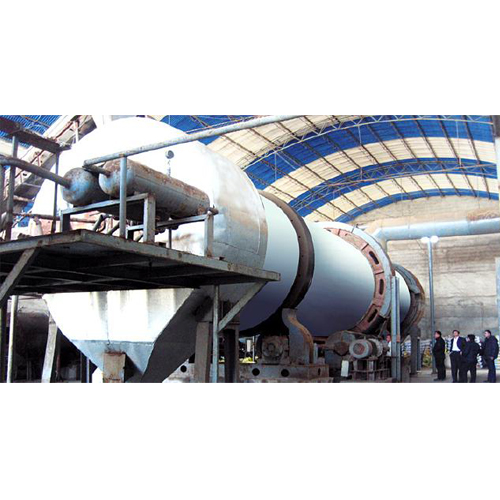- Urea Formaldehyde Compound Fertilizer Process
- Powdery Potassium Chloride Granulation Process
- Ammonification Compound Fertilizer Process
- Nitro-and Sulfur-Based Compound Fertilizer by Tower Granulation
- Biology Ferment and Organic Fertilizer Process
- Granule-Method (Steam) Compound Fertilizer Process
- New Coating Process for Controlled and Slow-Release Fertilizer
- Spray Granulation Process
- Auto BB Fertilizer Process
- New Mannheim Potassium Sulfate Process
- Nitrogen-adding Process
- Sludge Dried Process
- Ammonification Granulation
- Dry-way Extrusion Granulation
Spray Granulation Process
Description:
The liquid waste has a lower consistency of 12 to 15 Be, so a four-effect evaporator of good heat exchange efficiency is needed to evaporate and thicken those liquid waste to a consistency of 24 to 28Be. Then liquid ammonia and ammonium hydrogen sulfate are added into the liquid waste to adjust its PH value, meanwhile increasing the nitrogenous fertilizer content, an inorganic nutrient, in the liquid waste.
Through the pumping metering, the waste liquid enters into vapor-liquid two-phase-flow spray gun to be pressed and atomized into small droplets and then the droplets are sprayed into the cylinder of rotating spray granulation dryer. Meanwhile, inorganic materials like powdery N, P, K, fillers, are metered and then sent to that cylinder by conveyor.
At the same time, materials are lifted by the elevating shovelling plate inside the desiccant barrel to exchange heat with hot flue gas from hot air furnace so as to be dried into qualified particle materials. The exhaust is to be dedusted, washed and emptied in exhaust treatment device. Materials processed by drying equipment are of high temperature and their granules are uneven and different in size. So vibrating sieve or rotary grading sieve is needed to remove big particles and fine powder. Then sieved materials are cooled by rotary cooler to further improve granule intensity.
Then cooled granule materials are metered and packed for storage. Big particle material separated out by sieve is sent to horizontal pulverizer to be crushed into small particles. The small particle material and fine powder are sent to spray granulation dryer through return-material pipeline of kiln head to be granulated again. The final products of this spray granulation process meet all national quality standards of GB1887-2002 for organic-inorganic compound fertilizer.
The annual output of this spray granulation process is 30,000 to 150,000t/y.
Working Principle Diagram:

3 to 15 t/y Spray Granulation Production Line

System Advantages of Spray Granulation Process:
1. High automation degree minimizes labor personnel requirements.
2. This granulation process discharges zero waste water. The washing liquid from wet dedusting process sedimentates in the sedimentation pond to be recycled and thickened for reuse. In this way, it avoids dust pollution and reduces the consumption of raw materials.
3. Its production formula is very flexible, effectively improving operation flexibility of this process equipment to produce different kinds of organic and inorganic compound fertilizer products.
4. Its fertilizer products contain lower moisture, more resistant to caking.
5. This spray granulation process discharges less dust and provides better production environment.
6. The machines in this process are reliable and easy to operate, and they are easy to maintain, manage. Moreover, they have longer continuously stable operation capacity.
Features:
1. Raw materials of this process are usually concentrated black liquids from monosodium glutamate plant, paper mill, pharmaceutical factory, etc.
2. Based on comprehensive planning and long-term development principles, this spray granulation process is good for the harmonious development of engineering construction and environment.. This process can protect environment as well as maximize engineering benefits.
3. The technology of this spray granulation process is quite mature, advanced, and this process is easy to manage and needs lower operation costs.
4. The exhaust generated during the fertilizer production process is handled properly to prevent secondary pollution.
5. It can treat its organic waste materials in a way of being harmless, minimizing and recycling, to optimize benefits of society, environment and economy.
Spray Granulation Process:



Thickening Process of Black
Liquid
Spray Granulation Process
Cooling Screening Process








